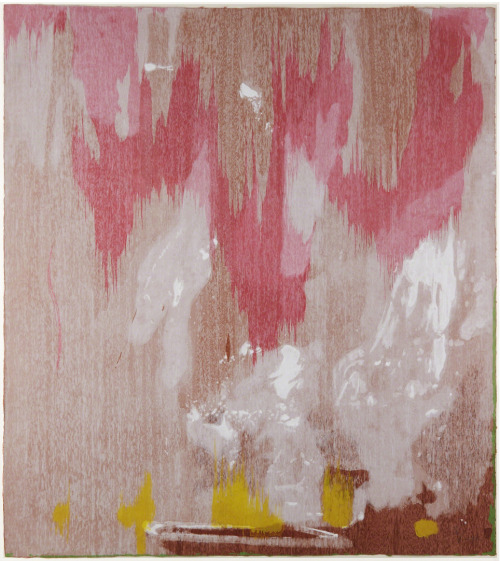#helen frankenthaler










Helen Frankenthaler soak-stain acrylic paintings
At first, Helen Frankenthaler used chemicals to thin down oil paint in her takes on the “fine art” soak-stain technique similar to ancient African fabric dying craftwork (tie-dye was invented by Black people then gentrified in the 1960’s). Inventions in art such as acrylic paint (soak-staining w acrylic is more archival to the raw canvas painting support than oil paint + chemicals) became the driving force in Frankenthaler’s work.
For the acrylic soak staining, paint is added to water + an additive to break the surface tension of the water (not confirmed but most likely commercial liquid soap like dish soap) that allows the acrylic paint to “bleed”/“pool”/act more as fabric dye or non-tube watercolor paint. Multicolored versions of that mixture are then poured onto raw canvases that are usually spread out on the floor. Brooms and sponges are used instead of paintbrushes in this process to achieve the goal of fully integrating color to the support/surface, composing with color is the main objective.
After Clement Greenberg showed Morris Louis & Kenneth Noland Frankenthaler’s early soak-stain paintings (Mountains and Sea, 1952) they went back to Washington D.C. (where they are mostly based), completely changed both of their art practices to using the soak-stain painting without fully crediting Frankenthaler for the direct inspiration. Frankenthaler adding from Jackson Pollock became a major milestone in the history of white color field painting.


